Starting on the weekend of the 20th/21st June, several members of WAG continued in their attempt to discover the secrets of Hollowforth Mill. There were two main aims; to determine the extent of the eastern and northern walls. With some reservations this was achieved. The area around the eastern wall is slightly confusing in that there appears to be clay over the top of the rubble. The suspicion is that when a pipeline was put in across the field the clay was thrown on top of the edge of the old mill.
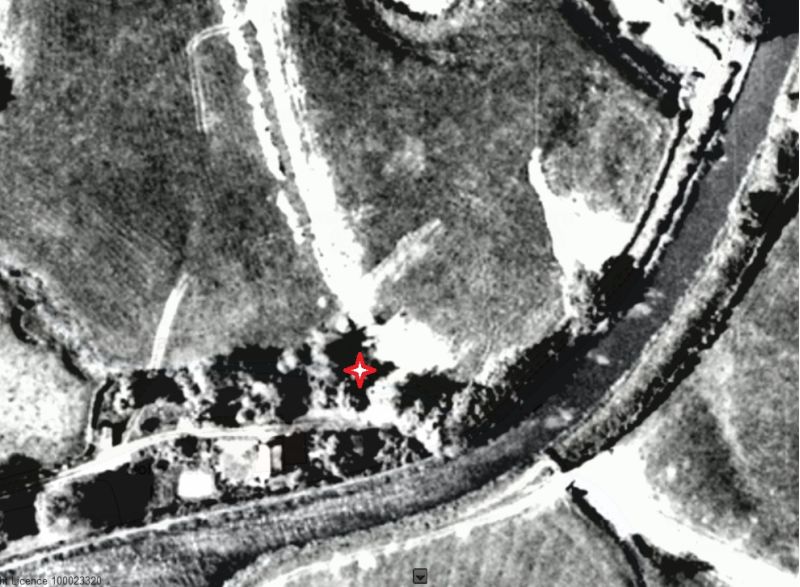
The image above was taken from a 1960's aerial photograph and appears to confirm the pipeline hypothesis.
The red star shows the approximate position of the mill - the blurred white line moving past the mill is the pipeline debris. The pipeline debris also appears on the eastern (right-hand) side of the canal, so perhaps the tunnel that feeds the mill race was re-used as a way of getting under the canal.
A short trench was put in to determine the extent of the eastern wall. The left-hand image confirms that it goes no further (at least in this section) than previously thought. The right-hand image shows the large stone removed to reveal a clay floor. More on this in future digs.
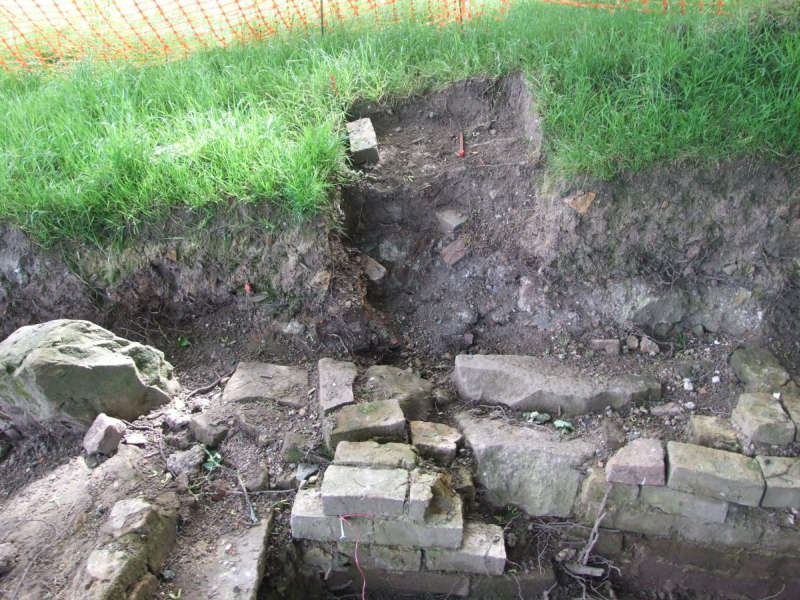
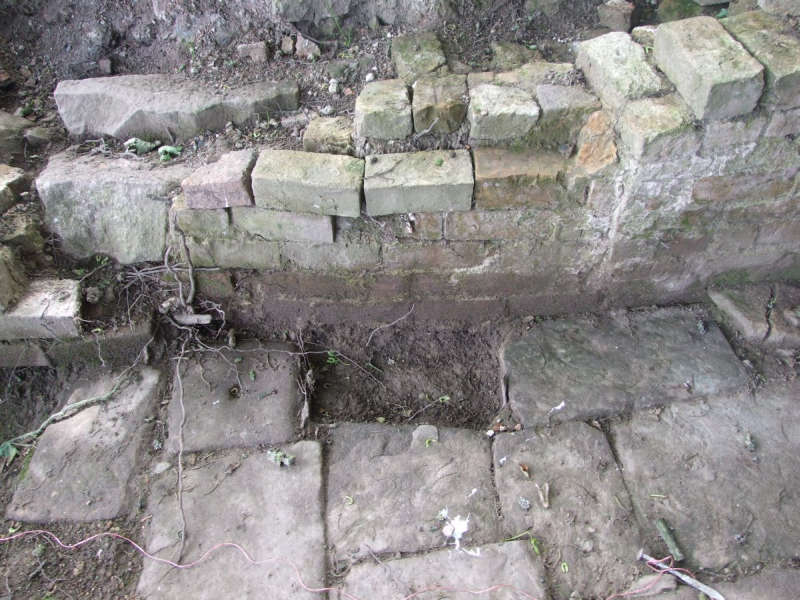
After the last dig it was thought that the northern wall might continue further northwards but it turns out that it was just a slumped wall. Some information can be gathered from this however - the slumped wall was almost intact so it cannot have fallen very far. The implication of this being that it was a ground floor wall that had fallen. The left-hand image below shows this together with part of the gulley that appears to run along the northern wall. The slumped wall will need to be removed to determine the course of the gulley. The right-hand image show the north-eastern corner, apparently marked with a large stone.
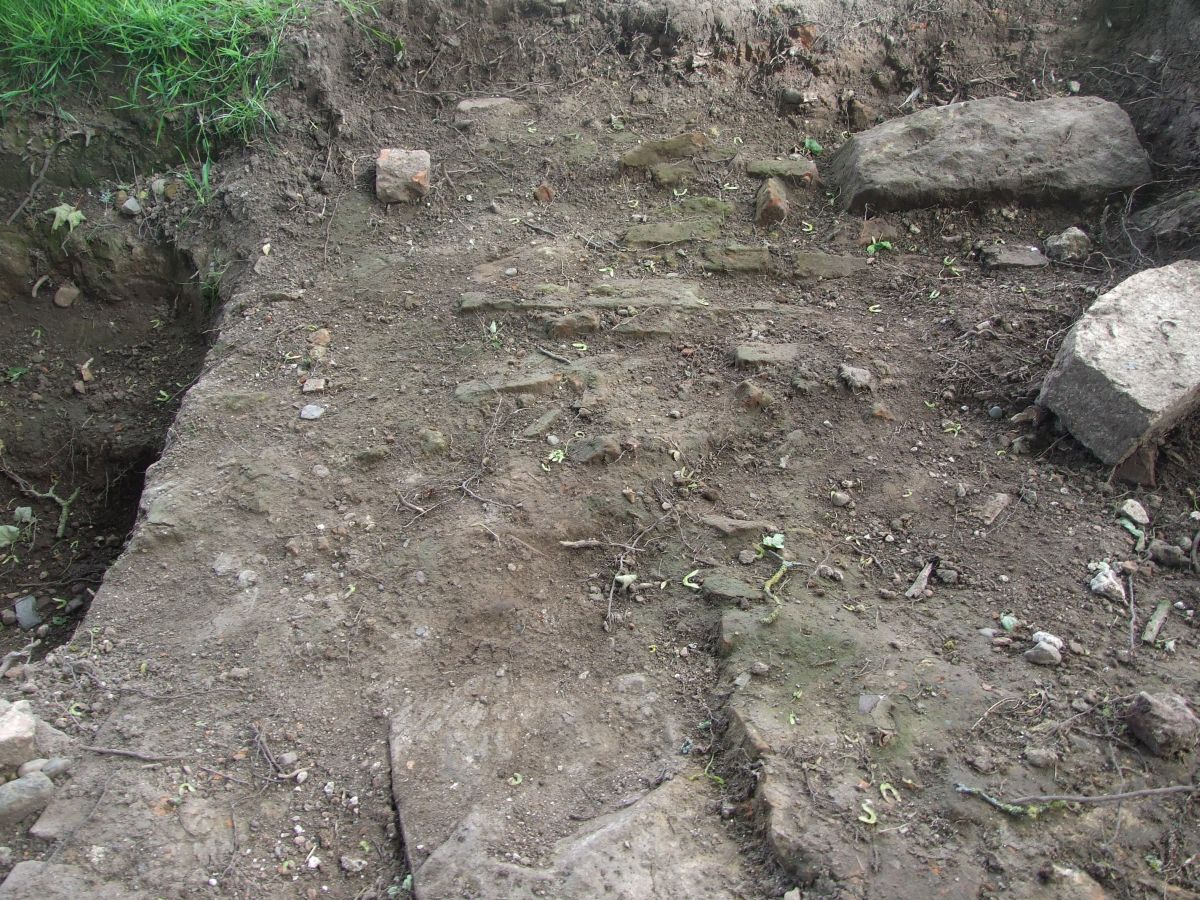
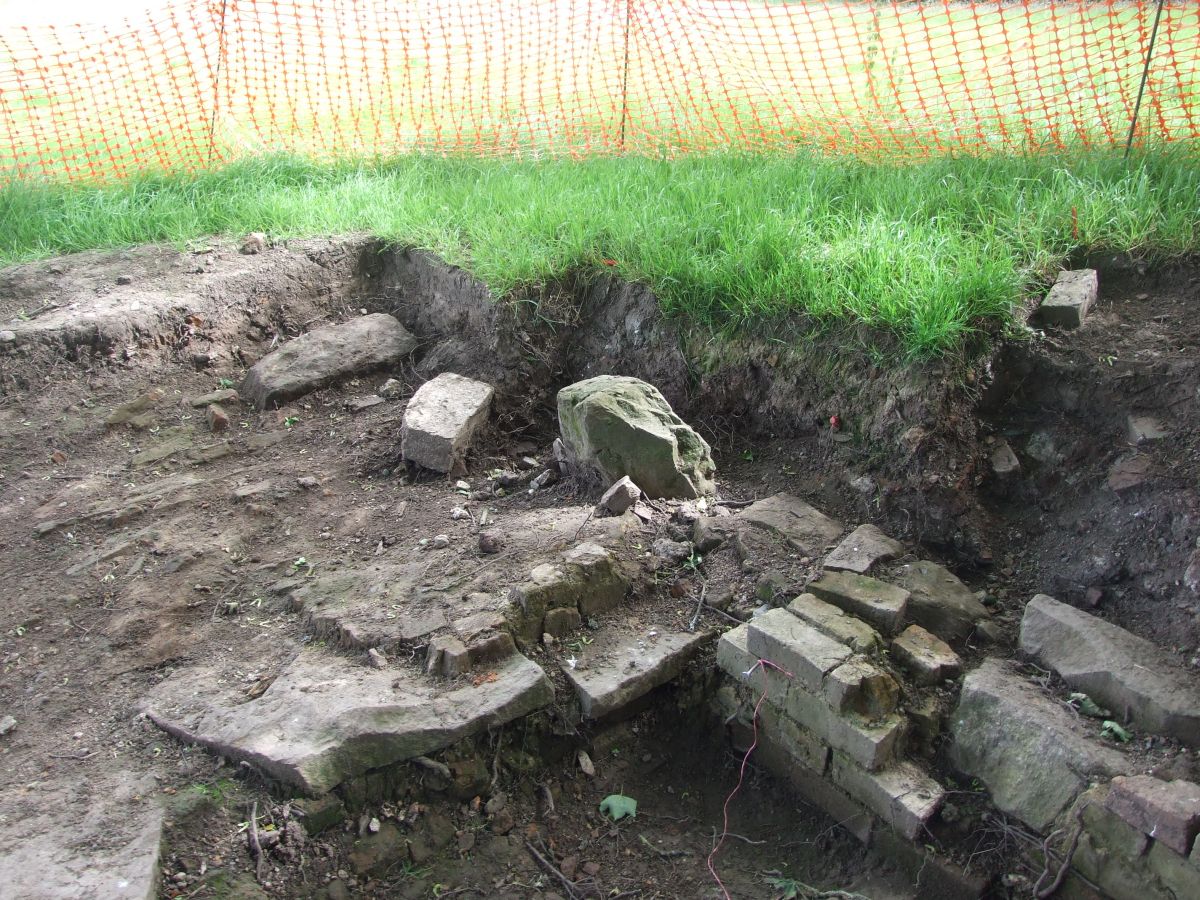
Final elevations were recorded and, at the next dig, it is intended that some uncovering of the earlier phases will be attempted. Further cleaning up of the slumped wall on the 12th July, 2015 provides more detail - the mortar still being visible.
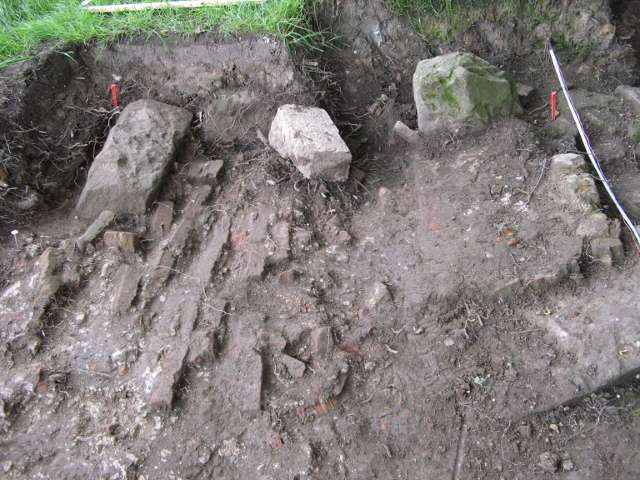
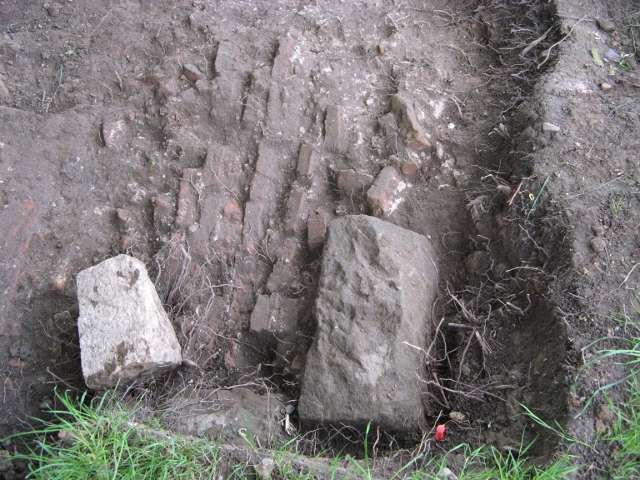
The Hollowforth dig continued on the 25th July. The outside of the west wall was investigated and taken down to natural. This, for some reason, was at a higher level than the inside floor level.
The "trench" on the northern wall was continued in two main areas. The western edge which turned out to be the lowest part of the trench. The eastern edge, under the slumped wall, was partially uncovered without discovering any obvious reason for slumped wall being found at that level. In uncovering this section it was discovered that the brick wall continued under large slabs of stone. The wall being 4 bricks wide and un-mortared. It didn't seem to have enough strength to support a brick or stone structure - perhaps this portion of the mill was made of wood.
Further investigations on the site continued on Sunday, 16th August. The Northern gulley was continued towards the East whilst the extent of the Eastern was investigated. Surprisingly the gulley was starting to move UNDER the NE corner. This will need to be investigated further.

On Friday, 4th September, more investigative work was carried out. The NE corner (near the tunnel shown above) contained more than a metre of rubble so this meant slow progress.
Other diggers investigated the "passageway" on the western side of the site. The confusing remnants of broken mill wheels with spikes in them was looked at first. A small sondage was dug close to the most northerly spike to determine the surface below the mill wheel. Only the natural surface was revealed.
At this point it was decided to investigate the small square section, bounded on one side by the second broken mill wheel; on the other sides by brickwork. It was obvious that an attempt had been made to level the brickwork by laying some of the bricks side-on, by adding mortar or slate.

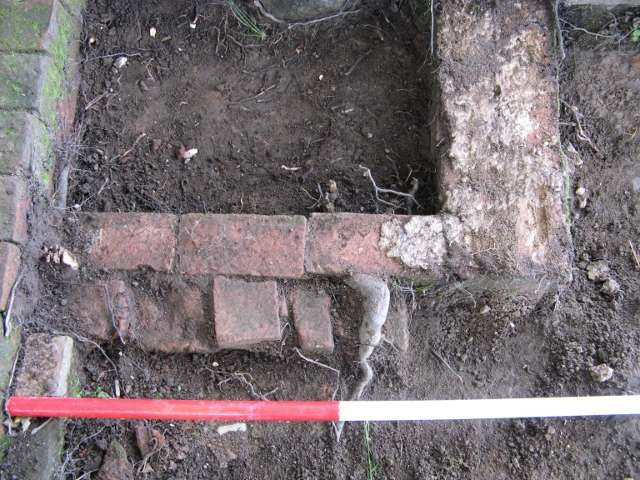
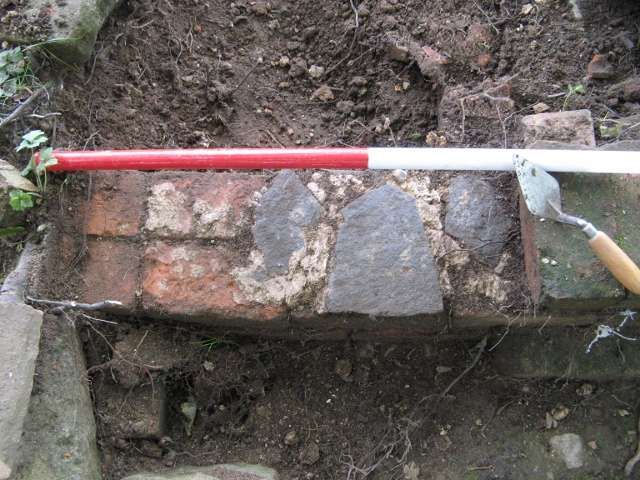
The brickwork work was, in turn, removed and taken down to the natural. One problem that had been posed was the relative timings of the building of the wall and the broken mill wheels. A final section of wall was removed to check how the brickwork butted up against the mill wheel. No final decision was made on this but it looks like they were probably put down at the same time or within a short period of each other.
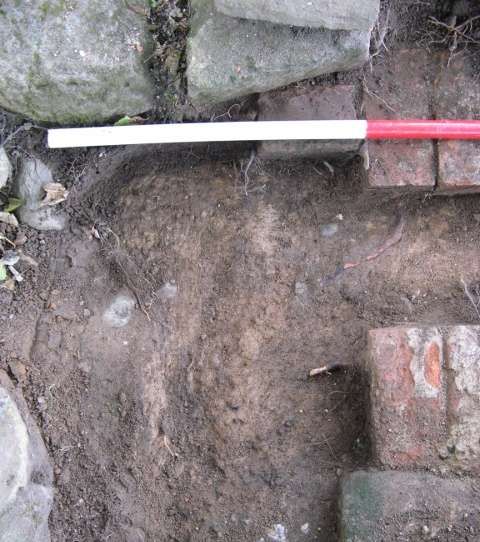
The writer was missing from the Saturday dig but on his arrival on Sunday the North-Eastern corner had been almost dug out.
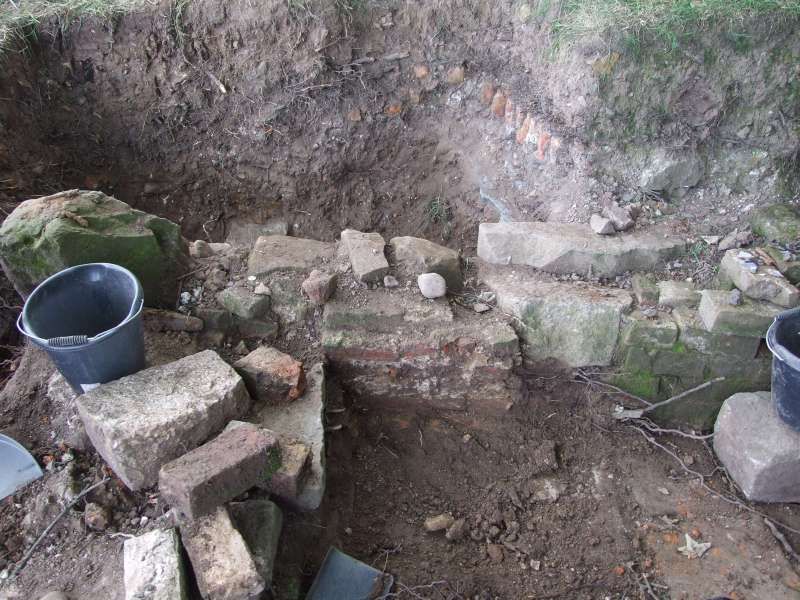
This was continued on the Sunday taking the Eastern side back further as well as removing the confusing, probably supporting, walls. One observation that threw the cat amongst the pigeons was that the flags only went up to the fragile eastern wall of a later build. The implication being that jerry-built wall and the flags had been put down contemporaneously! Prior to this observation it was suspected that the flag floor was part of the earlier mill.
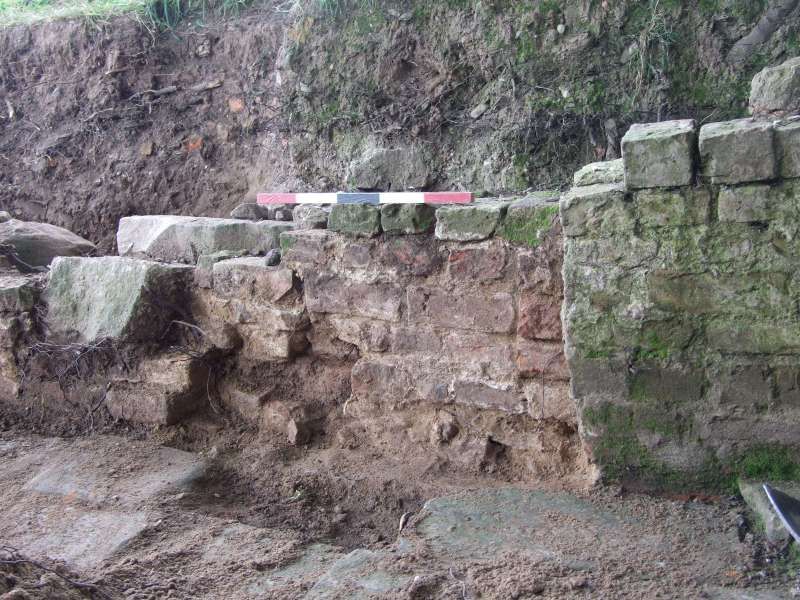
Other diggers investigated the corner of the flagged area nearest the large tree. The intention was to determine if the flagged floor disappeared under the tree and, possibly, around to the SW corner where there is more flags.
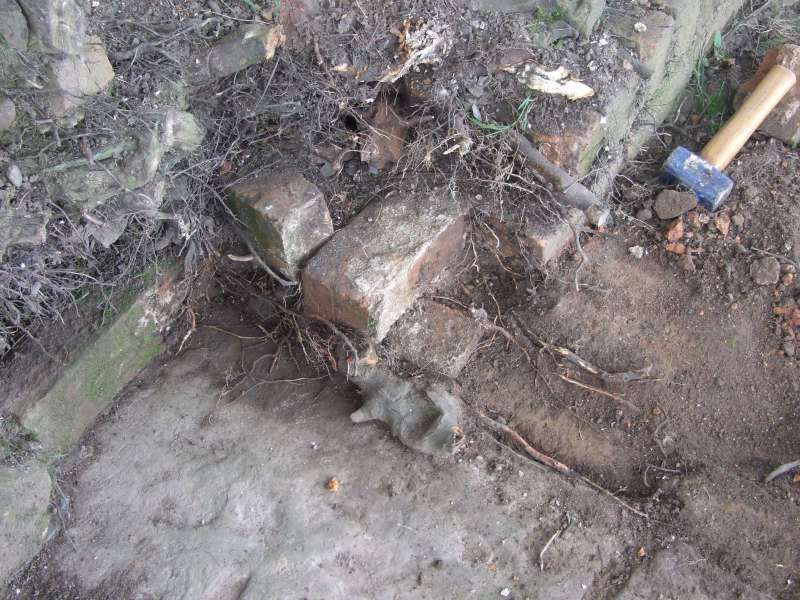
On Tuesday, 6th October, more members gathered to continue the dig, looking at the NE corner and taking the debris further down & back along the Eastern wall. The debris continued below what we suspected should have been the natural level on this side and, more surprisingly, debris appeared under the substantial NE stone corner. The working hypothesis for this being that there had been more than one phase of destruction.
Towards the end of the digging day another unexpected find appeared. Deep down along the Eastern wall appeared a clay pipe. This partially disappeared below the NE corner in a northerly direction. On the following Friday the webmaster returned to excavate the pipe further but was frustrated by significant stone protection for the pipe.
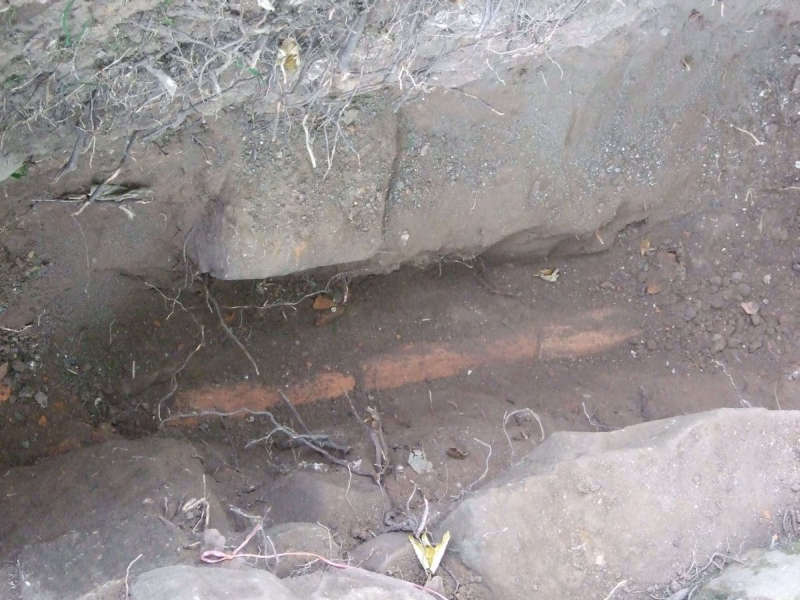
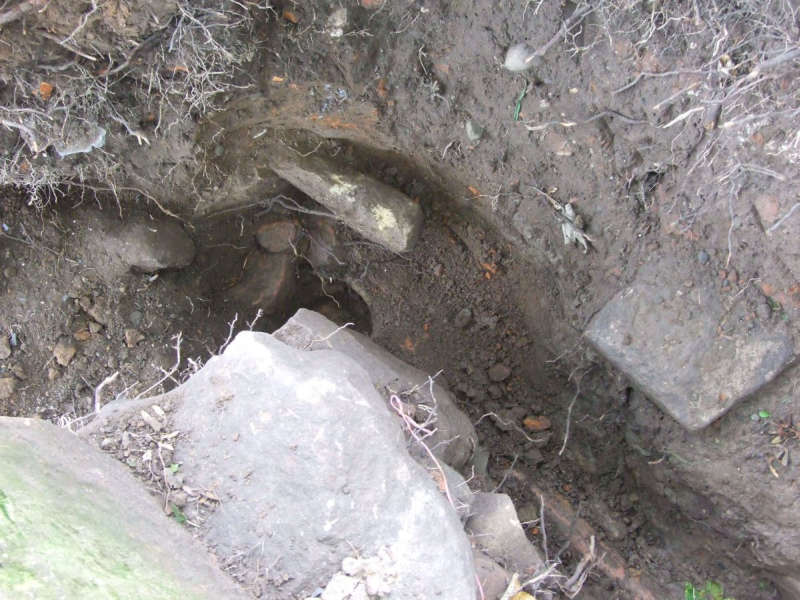
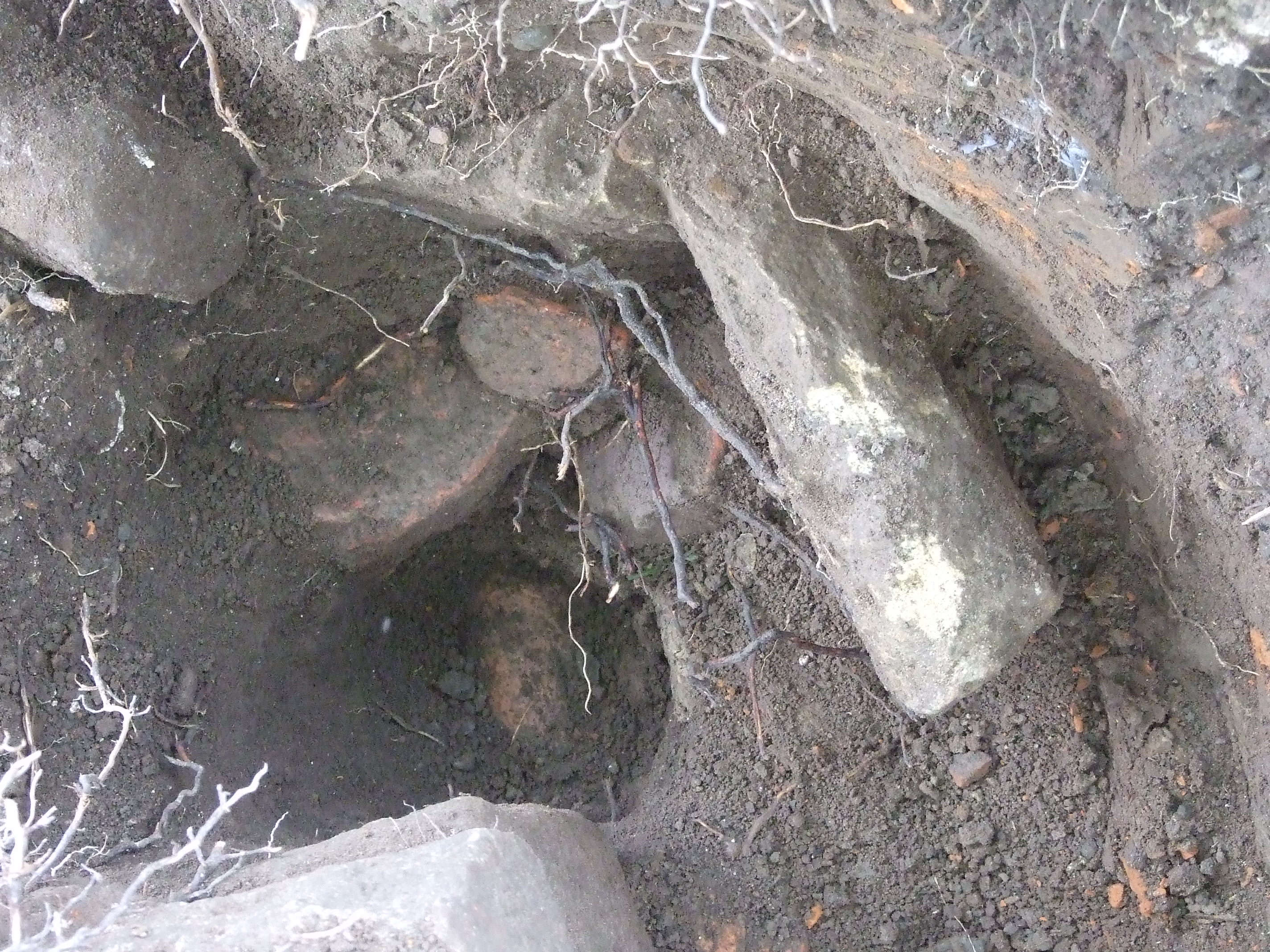
In "The Archaeology of Improvement in Britain, 1750-1850" by Sarah Tarlow there is the following quote "We know that tiles and pipes marked "DRAIN" date from the period 1826-1850 when tiles used for field drainage were exempt from the tile tax that had been in force since 1784."
